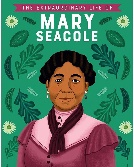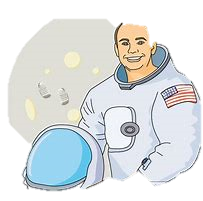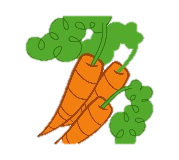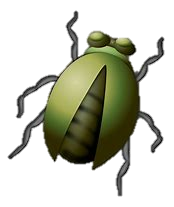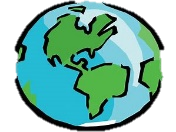Year 2
Year 2 Curriculum –
“Why are we learning this?” “Why is this important knowledge?” “How will this learning help me?” “How is this learning connected to what I have learnt before?”
At Whinless Down Academy we believe that ‘learning changes lives’. We are committed that each of our topics has a purpose and a ‘Big Idea’. The ‘Big Idea’ is the rationale behind our curriculum and choice of topics.
|
Term 1 Healthy Living
|
What does it mean to be healthy and is it really that important? In this topic we learn all about health finding out all the ways we can look after our bodies; from brushing our teeth like a dentist, to interviewing a real life nurse and even becoming a MasterChef and preparing a healthy meal for our families. We will consider a whole body approach to healthy living. But has being healthy always been this easy? Florence Nightingale and Mary-Jane Seacole might disagree, as we travel back in time and think about what hospitals and health looked like before the rise of the modern day nursing heroes. As spectacular Scientists we find out about and describe the basic needs of animals, including humans, for survival and look at the importance for humans of exercise, eating the right amounts of different types of food, and hygiene. As hard-working Historians we will compare the lives of Mary Seacole and Florence Nightingale and think about how they have contributed to society and exploring the idea of legacy. In DT, children will explore cooking and nutrition, designing their own healthy meal and beginning to consider where food comes from and the impact of this. |
|
Term 2 Explorers
|
'How has exploring impacted the world we live in today?’ People have been exploring for thousands of years and have discovered lots about the world and beyond. The earliest explorers discovered different lands. On his quest to find India, Christopher Columbus stumbled across the Bahamas and discovered quite how big the world is! As the first man ever to walk on the moon, Neil Armstrong was launched into History. He paved the way for many other great astronauts and space expeditions. It was ‘one small step for man and one giant leap for mankind’! Since then many intrepid explorers from the Cholita climbers to Felicity Aston have embarked upon their own adventures… What does it take to become an explorer? Who will be the next big adventurer? As spectacular Scientists we investigate, identify and compare the suitability of a variety of everyday materials for different uses. As hard-working historians we will study the lives and contributions of Neil Armstrong and Christopher Columbus as world famous explorers building on our learning from term 1 and the concept of ‘legacy’. As ambitious Artists we will take inspiration from Turner and the ‘Thanet skies’ to create our own landscape art. |
|
Term 3 The Great Fire of London |
As hard-working historians we will learn all about 1666, when a Great Fire spread through the city of London, destroying over 13,200 houses, over 80 churches, St Paul’s Cathedral and most of the other buildings. Prior to the fire, houses were mainly built out of wood and were very close together. What impact did this event have on our lives today? In this topic, we will journey back in time and explore what life was like back in 1666 and how we learned from the past to make housing safer today. We will learn about famous figures from that period, including architects like Christopher Wren. Exploring some of London’s most famous landmarks and using a range of sources to understand why our great capital looks how it does today. As ambitious artists we will develop sketching skills and our use of charcoal to create skylines and imagined scenes of the Great Fire of London inspired by historical sources. |
|
Term 4 The Garden of England |
As spectacular Scientists we will consider, ‘Do all plants require the same conditions to grow?’ What can we discover about growing plants? Plants have been growing for thousands of years and during this time people have been enjoying them as food as well as appreciating their beauty. The earliest civilisations ate the plants that were growing around them; today we not only eat some plants but grow plants for a hobby and to look at too! It’s not only people who enjoy eating plants – Peter Rabbit loves them too! We will learn all about him in our class text. As great geographers we will explore through carrying out our own fieldwork studies, investigating; How many birds visit the garden every day?, What animals live under stones in the garden?, What flowers do bees like best? We will then consider ways to share and present these findings. |
|
Term 5 Bugs and Beasties |
In Science we ask the BIG question, do we all need the same things to live? Every living creature goes through a life cycle. At each stage, their characteristics change and they develop in different ways. A caterpillar changes into a butterfly and humans learn new skills as they grow. Habitats enable creatures to be safe and have an environment to grow. A frog thrives in a cold, wet pond whereas humans flourish in the warm and dry. Eventually, the life of creatures come to an end. Is this the same for all living things? As great geographers we will then build on our fieldwork skills from last term to investigate the ‘bugs and beasties’ around us. We will use our map and learn simple compass and directional skills to help us navigate our way around the school grounds and beyond. |
|
Term 6 Around the World
|
How big is the world? How is it made up? What are the names of the continents and oceans? These are BIG questions, which we will begin to answer this term. Journey with us on a virtual cruise around the world, visiting each continent as we go and sailing across the many oceans. Using compass directions, we will sail to each continent where we will learn important facts about one of the major cities. Do all countries have and celebrate the same things? Let’s find out through exploring customs, culture and geographical features as we travel to each continent, making comparisons along the way. As spectacular Scientists we will study the habitats of animals and consider where and why animals live in the continents they do. In Art and DT we will take global inspiration from a range of countries to create final pieces of artwork and replicas of cultural emblems. |

